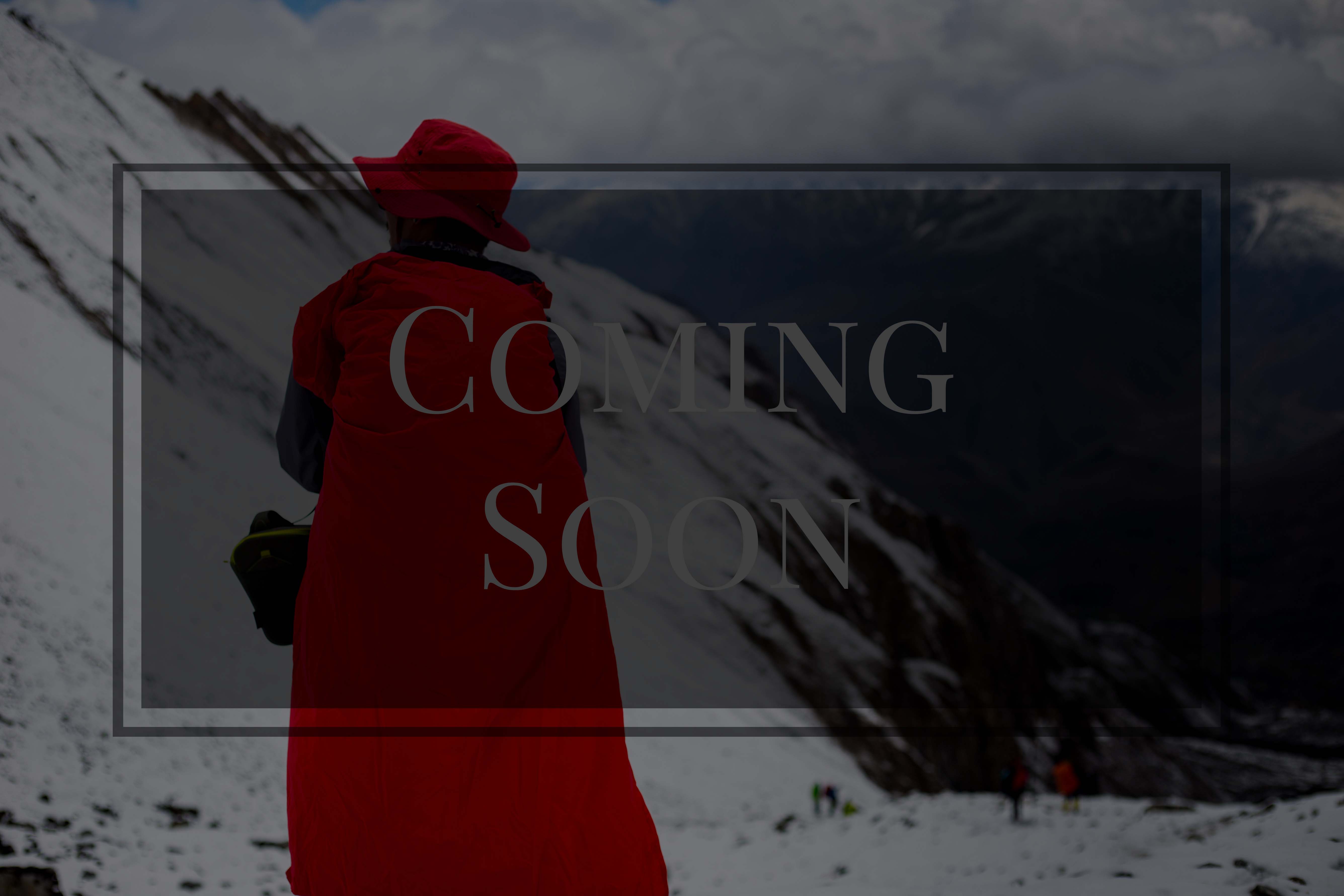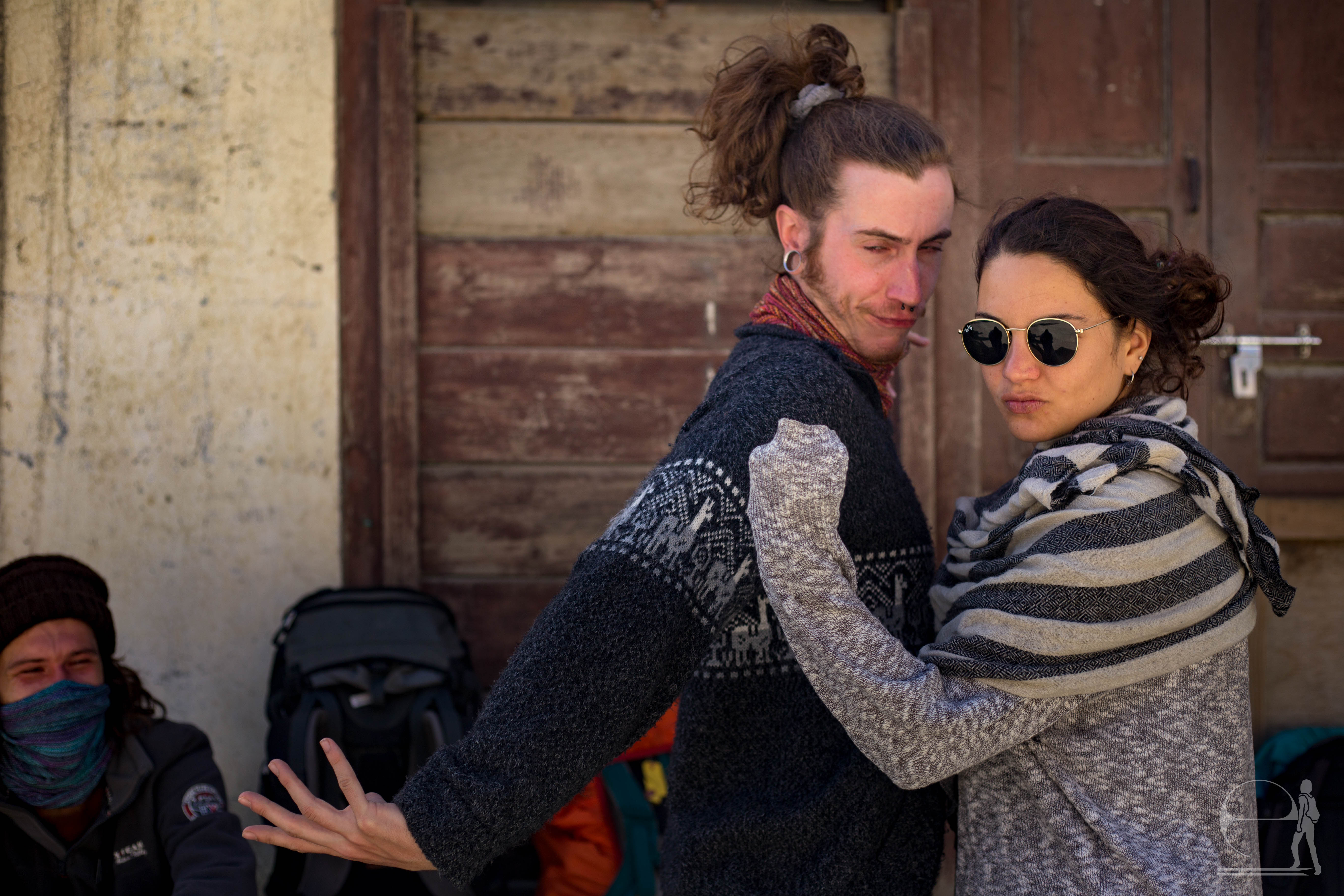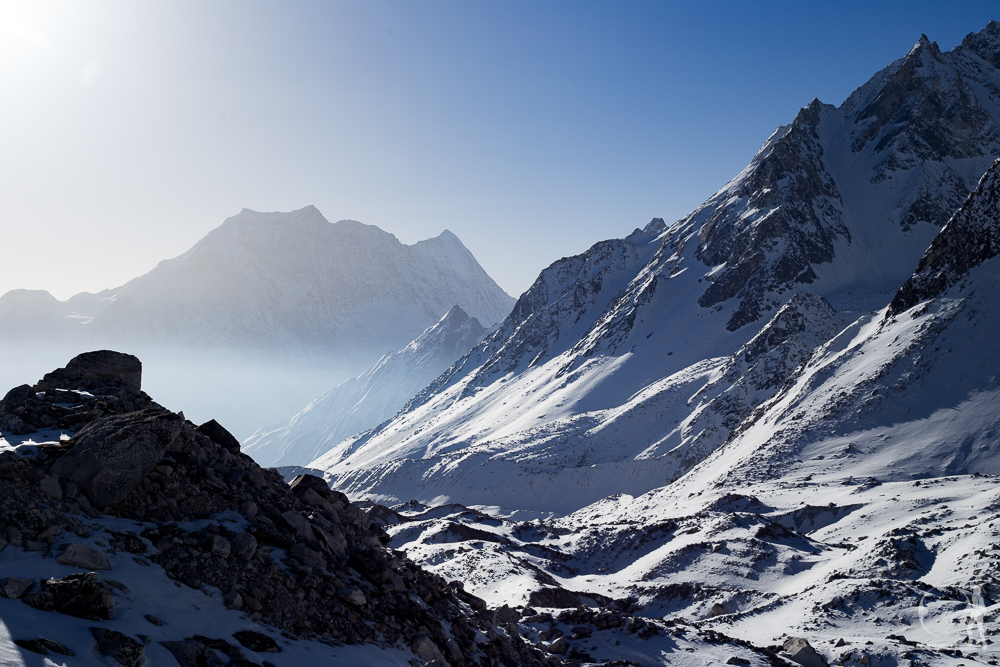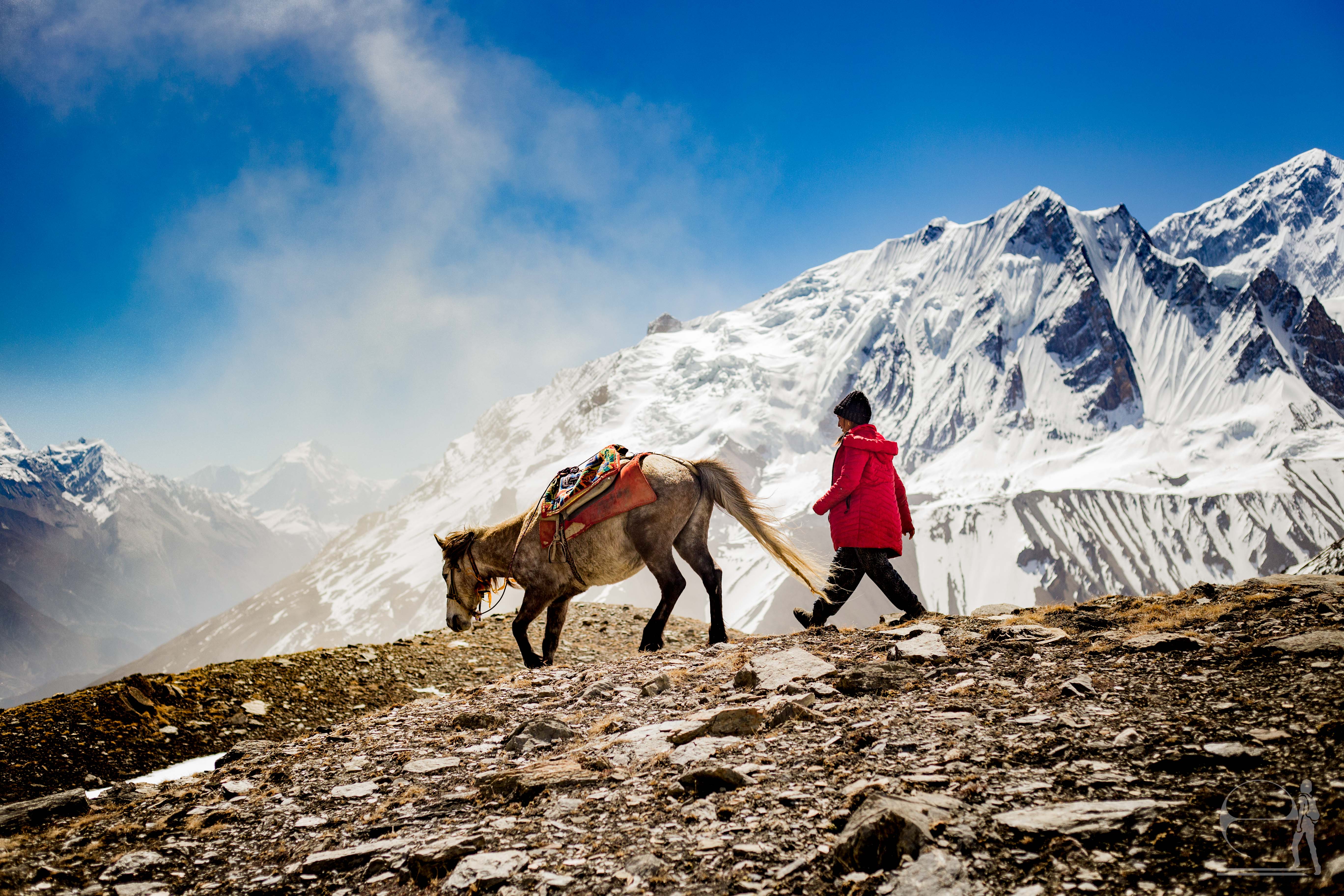/ What’s in my bag?
Miscellaneous essentials

So we’ve gotten the big categories out of the way. Here are some miscellaneous essentials which I generally bring with me:
- Headlamp
- Sunglasses
- Traction
- Solar panel and charging cable
- Camera
- Daypack
- Book
- Medication
A headlamp and sunglasses are essential: I always bring these. A camera is optional, since you can also use your phone to capture your snapshots. The rest are optional, but I’ll bring them more often than not.
Traction
Microspikes are often dismissed by most trekkers as “too much extra weight” which isn’t used for most of the trip. You only need them on packed snow and ice, which usually means only when you’re crossing a high-altitude pass.
My suggestion is, if your trek itinerary includes a high-altitude pass, bring these. They are worth their weight. They make your descents much faster and far safer than if you’re half-slipping and sliding down a steep slope. While doing the high pass on the Manaslu Circuit, two skilled porters with good shoes slipped a long way down the icy slope. Fortunately, they were both fine, but it was a scary sight. A few experienced trekkers and guides showed them how to use wool socks on the outside of their shoes to increase traction since they did not have microspikes.
I’ve brought microspikes for both of the high passes I did, and I do not regret carrying their weight for the duration of the trip.
Solar panel and charging cable
Some treks have reliable charging points. For these treks, you do not need to bring a solar panel. However, you may be charged a small fee to charge your devices. I generally bring a solar panel on the more “remote” treks if I’m not expecting charging stations. Conversely, you can consider buying an external battery, though these may be heavier.
Daypack
If your trekking itinerary includes a rest day or day-trip, consider bringing a ultralight daypack. Sometimes, the hood of your backpack will detach to form a daypack. I also use my daypack on bus and jeep trips to keep valuables, like my camera, with me instead of with my bag on the roof of the vehicle.
Book
Okay this may seem luxurious, but trust me, it’s not. Bring some reading material, whether in hard or digital copy. You’ll probably reach your destination no later than 5 PM each day. This leaves a couple of hours to chat, play cards, or read each evening. After a full day on the trail, sometimes a little alone time isn’t a bad thing.
Medication
It’s good to have your own pharmacy on the trail. Useful medications include fever/pain medication and altitude sickness medication.
I always carry anti-inflammatory medication (Ibuprofen) with me, since I know I’m prone to fevers when it gets too hot. This is also good as pain relief medication.
If you’re trekking without a guide and plan on going above 3500m, it’s good to carry some sort of altitude sickness medication, such as Diamox. This will alleviate the early symptoms of altitude sickness before they worsen. Use this medication sparingly, as it wreaks havoc on your body. If you’re trekking with a guide, he or she should have some in case you need it.
Basic first aid
I always carry some very basic first aid with me whenever I go outdoors. Besides some medication, I usually bring alcohol wipes, antiseptic cream, bandaids, and cloth tape. These aren’t just good for scrapes but also blisters. You shouldn’t need anything more extensive if you are trekking with a guide — discuss with him or her what first aid supplies they will have available. If you are trekking by yourself, you might want a few more items in your kit. Generally, you are walking from village to village every few hours, so you just need to be able to stabilize yourself to get to a village.




